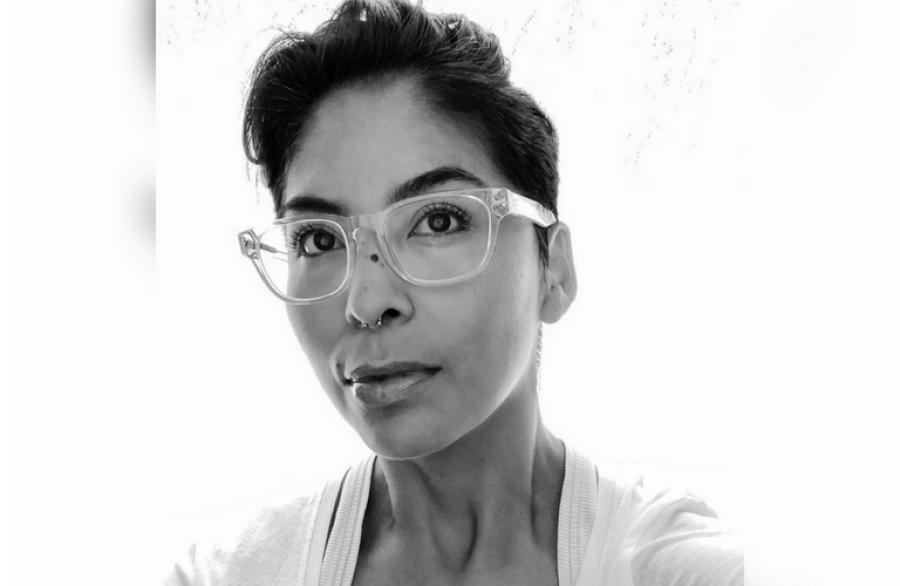Nadya Kwandibens is an Anishinaabe portrait and events photographer who aims to tell Indigenous peoples’ stories through images. In her vision statement, she says that she wants change the perception, cemented in history books, museums and media, that Indigenous people are impassive and part of troubled, once-proud nations. She instead shows her subjects as part of successful communities, as fathers, daughters, professionals and dreamers. “I recognized that photography was the way that I could share different Indigenous realities,” she told The Observer.
She now lives in the Animakee Wa Zhing #37 First Nation in northwestern Ontario, but grew up in foster homes in Ontario and Manitoba and returned to her community as a teenager.
You may unsubscribe from any of our newsletters at any time.
In June, the Ontario Arts Council recognized her work with the 2018 Indigenous Arts Award. She spoke to Emma Prestwich.
Q: You started figuring out who you were as an Indigenous woman when you were a teenager. How did that influence your mission statement for your work?
A: I’m Anishinaabe. Just learning more about my culture and wanting to know different artists. I read a lot of books. I still read a lot of books. Just familiarizing myself with different Native writers, authors, thinkers, other artists. Of course it’s going to inform my work.

Q: Many of the portraits have a distinctive look to them. The light hits people’s faces in a certain way that makes them look like they’re glowing — not in a supernatural way, but their faces are just radiant. How do you make your portraits so distinctive?
A: I’ve done interviews for awhile now, and that’s always pointed out, but I guess it’s just the way I see. I really don’t know how to explain it. I don’t do a lot of editing. Sometimes I’ll boost some colours. But for the most part, those were the lighting conditions.
Q: Is there art in which you see portrayals of Indigenous people that bother you?
A: I think it’s important to recognize that there are Indigenous storytellers out there, and appropriating our stories and our culture is definitely an issue that continues to happen today.
If you want a specific example, say, in the past, you’d see photos by Edward S. Curtis. Most people think that his photography of Indigenous people from hundreds of years ago showed that’s how it was. His portraits were contrived. They were staged.
Appropriation and use of our stories to highlight Indigenous issues — I’m talking specifically here about profiting or benefiting off of Indigenous pain and struggle — is definitely problematic.

Q: The Arts Council Award that you recently won — what does that mean to you?
A: Oh, goodness. Just to even be nominated, and then, as a laureate to be standing amongst different artists who have received it, was quite an honour for me. And I knew several of the artists who were nominated this year, many of whom were my friends, so I was rooting for everyone. I dedicated the award to my mother. She recently passed away, and she’d always supported Red Works and what I’d been doing. So it was very meaningful.
Q: Do you think there’s more space for the kind of work that you’re doing as an Indigenous woman now than maybe 20 or 30 years ago, or is it still difficult?
A: I don’t think I can properly answer that. I wasn’t doing this work years ago. But I can answer that question only talking about space as in right now. I think there is more space that is being created, but there’s definitely room for more. Not just more space, but also more Indigenous women photographers.

I did a presentation, I think it was a couple years ago, for the Toronto Camera Club, and that was quite [laughs], that was a really interesting talk. This experience comes to mind first when you talk about space, because that presentation was to a room full of old, white men. I think I was the first presenter of Indigenous background to present for them. It’s impossible to talk about [my work] without addressing settler colonialism. So it was a lot of background information about that. I got through it. It was two hours, non-stop.

Q: What was the response?
A: I was hoping for a little more in-depth curiosity — questions to know more about our people. But it was more questions about cameras, settings — all the technical stuff. Someone asked what decolonization was. So it was a hard presentation, but it was necessary.
Just letting people know what’s going on, what’s been going on, and how my art serves to interrupt that colonial narrative, that’s mainly how I approach my work and why I choose to take on different opportunities. There’s a lot of work that needs to be done.
It’s surprising how little mainstream society knows about its own history.
This interview has been condensed and edited for clarity.













